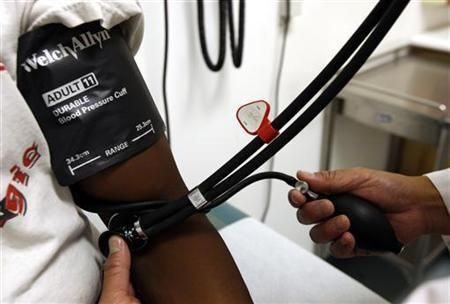New Heart Disease Risk Calculator, Guidelines Don't Add Up, Doctors Say

U.S. heart-health groups are wiping a bit of egg off of their faces after a newly unveiled tool for calculating cardiovascular disease risk came under swift criticism. Critics say that new guidelines may end up overestimating a person’s risk for heart disease, which means more people might end up with unnecessary prescriptions for cholesterol-lowering drugs.
Last week, the American Heart Association and the American College of Cardiology released new guidelines for cholesterol treatment, along with a downloadable risk calculator that allows doctors to estimate both a patient’s 10-year and lifetime risks for heart problems. You plug a patient’s information – age, sex, race, cholesterol levels, blood pressure measurements, smoking status, and other health markers – into a spreadsheet that uses an algorithm to estimate that person’s risk for heart attacks, strokes and other conditions. The ACC and the AHA’s new guidelines recommend that doctors prescribe cholesterol-lowering statins for middle-aged patients with a 10-year cardiovascular disease risk of 7.5 percent or more.
But as the New York Times first reported Sunday, when two Harvard Medical School heart researchers tried out the calculator, they found a problem. Paul Ridker and Nancy Cook took the calculator out on a test drive using several large heart-health studies that drew from a pool of more than 100,000 volunteers. The researchers had data on participants’ health from the start of the study and for 10 years afterward – including details as to which patients had had strokes or heart attacks during that time period.
When Ridker and Cook plugged the study participants’ information from the start of the study into the calculator, the algorithm spat out risk assessments that overestimated heart attack and stroke risk by about 75 percent to 150 percent. So, for example, a man who would have just a 4 percent 10-year risk for a heart attack based on the original studies might be told by the calculator that he has an 8 percent risk for heart attack – which, in accordance with the new guidelines, would probably mean he gets a prescription for statins.
“It is possible that as many as 40 percent to 50 percent of the 33 million middle-aged Americans targeted by the new guidelines for statin therapy do not actually have risk thresholds exceeding the 7.5 percent level suggested for treatment,” Ridker and Cook wrote in a commentary that will be published in the Lancet on Tuesday, obtained in advance by the Boston Globe and the New York Times. “Miscalibration to this extent should be reconciled and addressed before these new prediction models are widely implemented. If real, such systematic overestimation of risk will lead to considerable overprescription.”
Statins, more familiar under the brand names Lipitor, Crestor and Zocor, work by inhibiting an enzyme called HMG-CoA reductase, which helps produce cholesterol in the liver. The medications have some milder side effects including a small increase in a person’s risk for diabetes or muscle weakness, but there are some more serious rare side effects that can crop up: liver damage, confusion and memory loss. The U.S. Food and Drug Administration put new warning labels on statin medications in February 2012.
The website Pharmalive pointed out that six of the 15 panelists that wrote the new guidelines report ties to drug companies that either already sell or are currently developing cholesterol treatments. The researchers both received funding for their own personal research and consulted for companies like Merck (maker of Zocor), Pfizer (maker of Lipitor) and AstraZeneca (maker of Crestor). An AHA spokesperson told Pharmalive that there are policies in place to "manage" authors' relations with the industry, outlined in the report on the new guidelines.
Prominent cardiologist Steven Nissen, currently the Cleveland Clinic’s chief of cardiovascular medicine, called on both the ACC and the AHA to hold off on the new cholesterol guidelines in light of Ridker and Cook’s findings.
“It’s stunning,” Nissen told the Times. “We need a pause to further evaluate this approach before it is implemented on a widespread basis.”
At least one of the doctors that developed the new guidelines was skeptical of Ridker and Cook’s findings. Donald Lloyd-Jones of the Northwestern University Feinberg School of Medicine told the Globe that the studies the pair used to critique the risk calculator seem to have a population that’s healthier than average, which could have skewed the results.
But “if experts are having this debate over the new guideline, then what are practitioners and patients sitting on the sidelines going to think?” Peter Libby, chair of cardiovascular medicine at Brigham and Women’s Hospital in Boston, told the Globe.
© Copyright IBTimes 2025. All rights reserved.





















